Click through the slideshow to learn how to multiply decimals.

To solve our problem, we'll use a familiar tool: the times table.
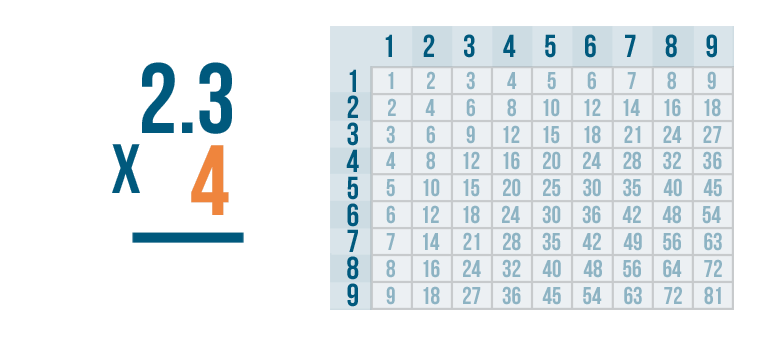
When multiplying stacked numbers, start with the right digit on the bottom. The bottom number only has one digit: 4.

We'll multiply 4 by the top number, 2.3. Since there's no 2.3 in the times table, we'll have to multiply one digit at a time.
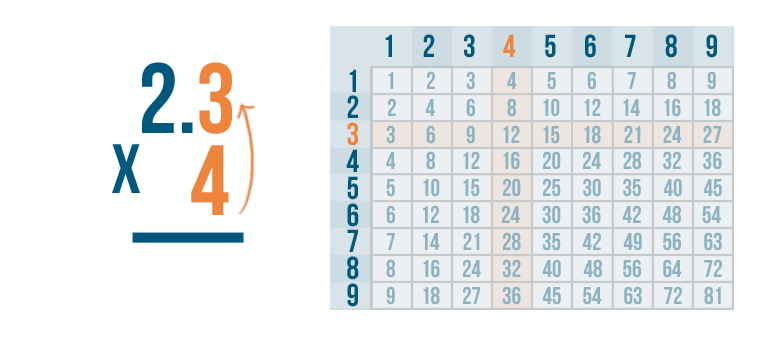
As usual, we'll solve the problem from right to left. So, we'll multiply 4 by the digit on the top right. Here, that's 3.

Now it's time to solve 4 x 3. We can use the times table.
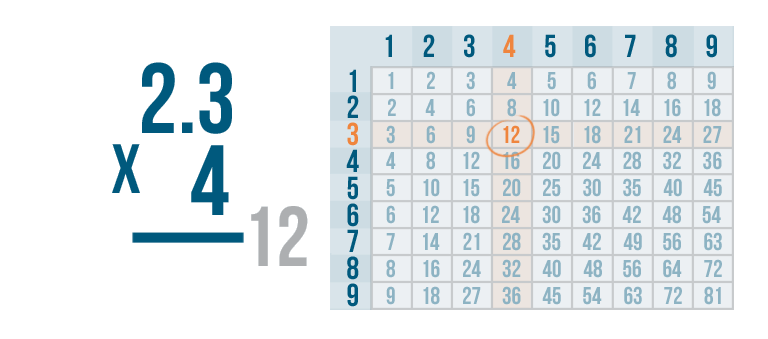
4 x 3 is 12, but there's no room to write both digits underneath the 4 and 3.

Remember, this means we'll have to carry. We learned about carrying numbers in the lesson on multiplying larger numbers.

We'll write the right digit, 2, under the line...
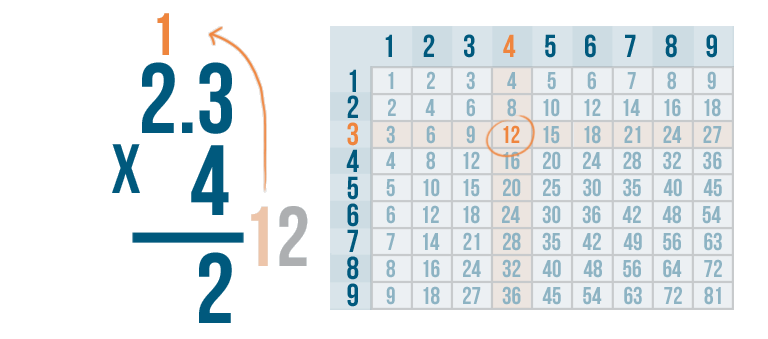
We'll write the right digit, 2, under the line...then we'll carry the left digit, 1, up to the next set of digits in the problem.
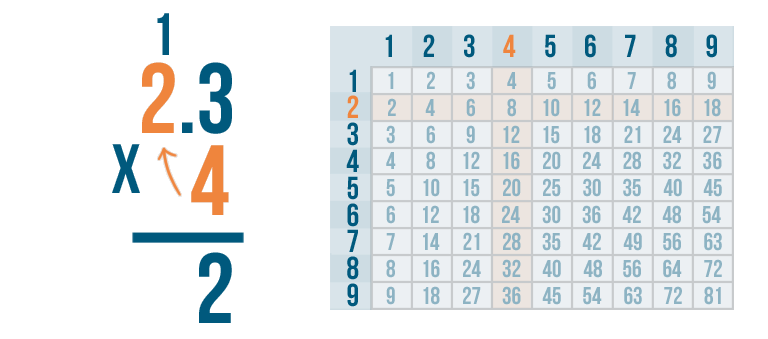
Now it's time for the next step. We'll multiply 4 x 2.
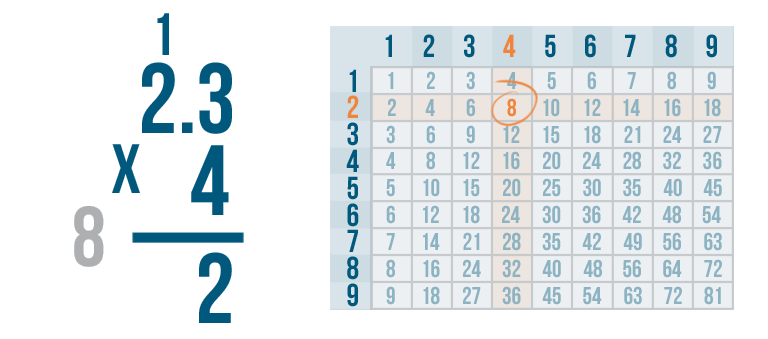
4 x 2 = 8. But we won't write 8 under the line yet. Remember, there's one more step.
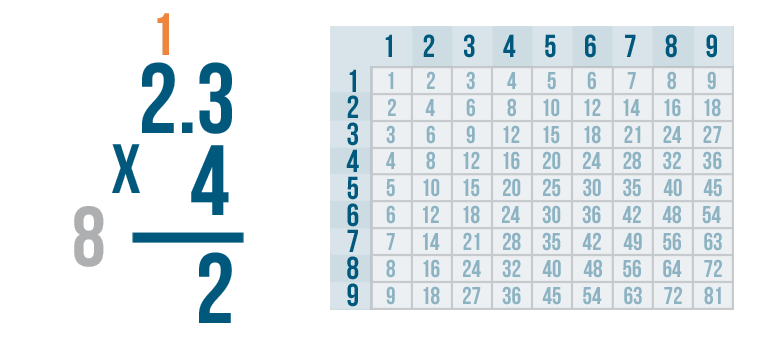
We need to make sure we add the number we carried: 1.

We'll set up our addition problem.

1 + 8 = 9.
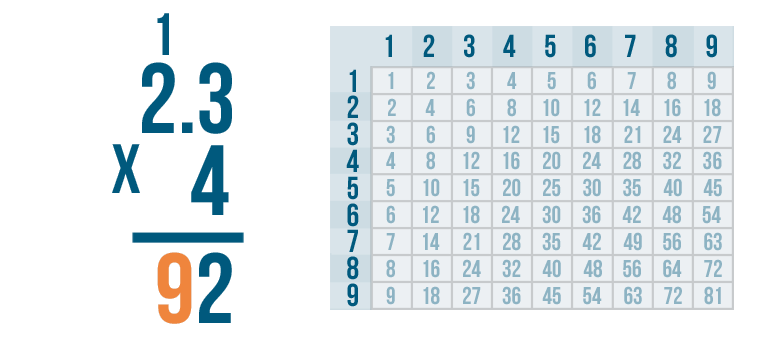
We'll write 9 beneath the line.
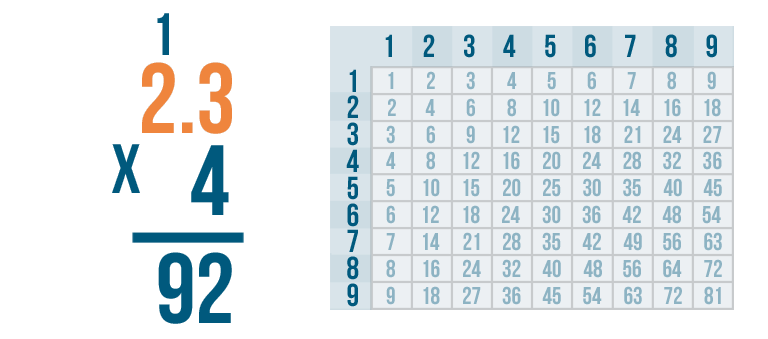
In our problem, we multiplied a decimal number: 2.3. This means our answer will also need to be a decimal number.

Let's figure out where to put the decimal point (.).

In the problem, 2.3 has one digit to the right of the decimal point.

This means our answer will also have one digit to the right of the decimal point.
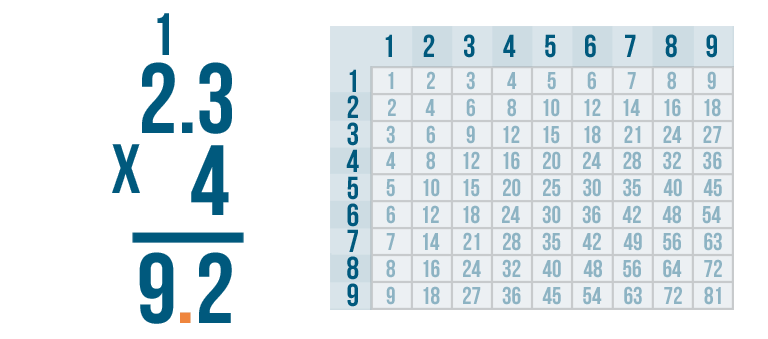
We'll place the decimal point so that only one digit is to the right: the 2.
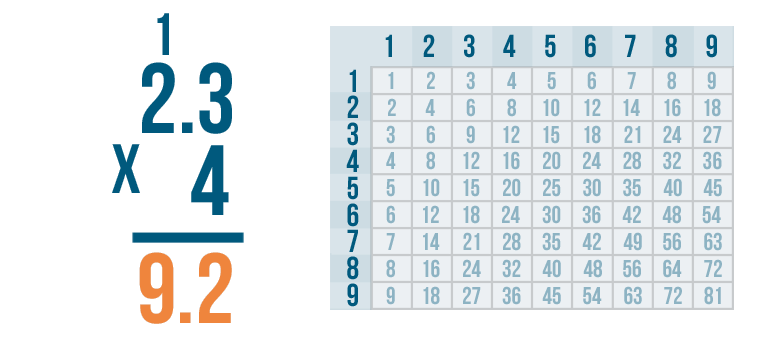
Our problem is solved. The total is 9.2. We know that 2.3 x 4 = 9.2. We can read this answer as nine and two-tenths.
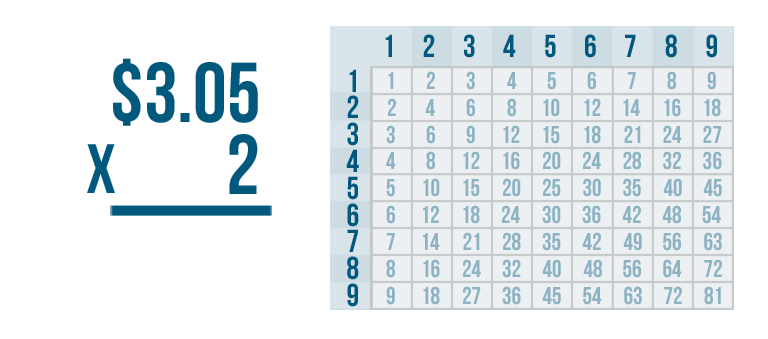
Let's try another problem. This time we'll multiply money: $3.05 x 2.
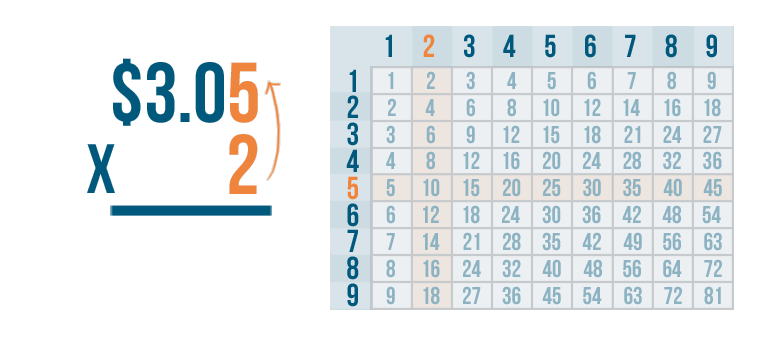
First, we'll multiply the bottom number, 2, by the digit on the top right. That's 5.
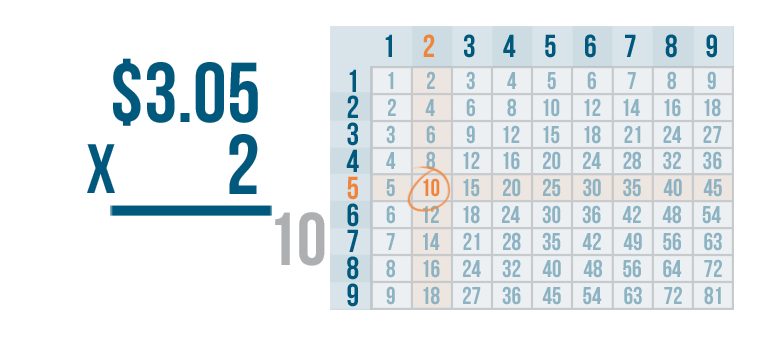
2 x 5 = 10.
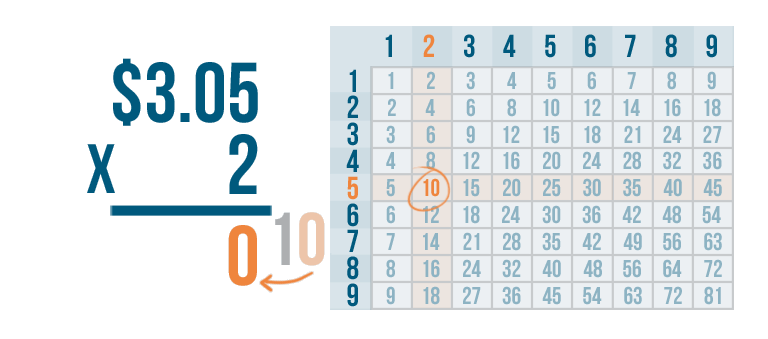
We'll write the 0 under the line...
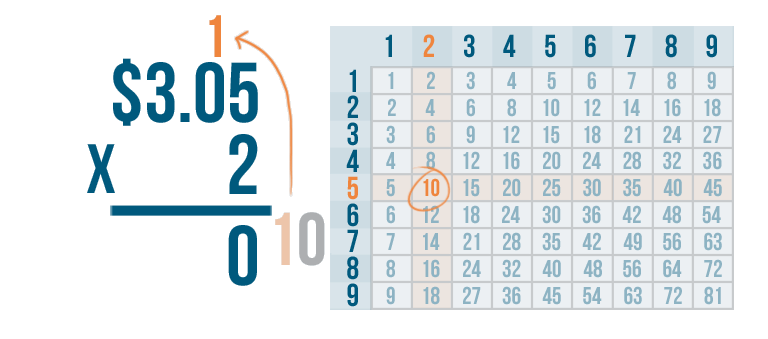
We'll write the 0 under the line...and carry the 1. We'll place it above the next digit.
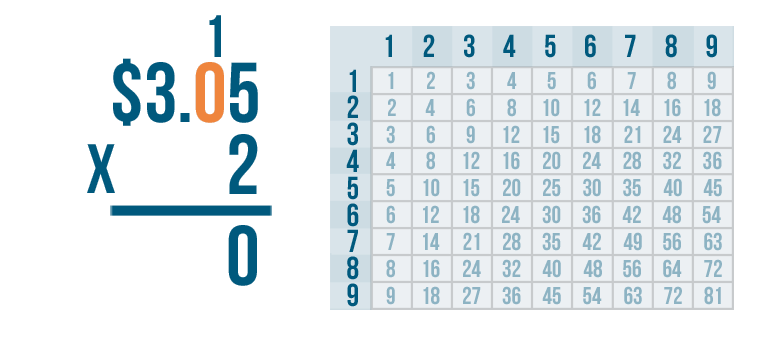
The next digit is 0.
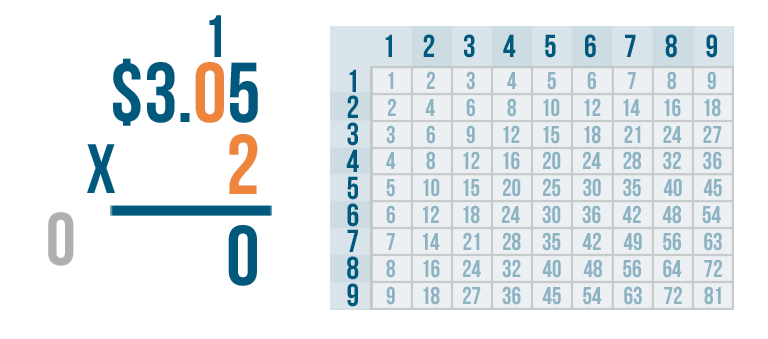
Anything times zero is zero, so we know that 2 x 0 = 0.
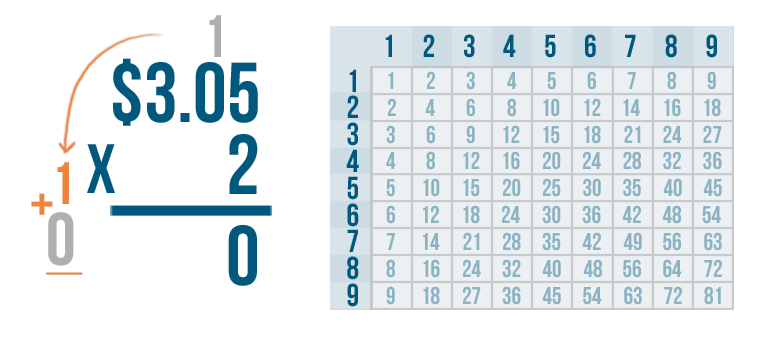
Remember, we need to make sure we add the 1 that we carried.
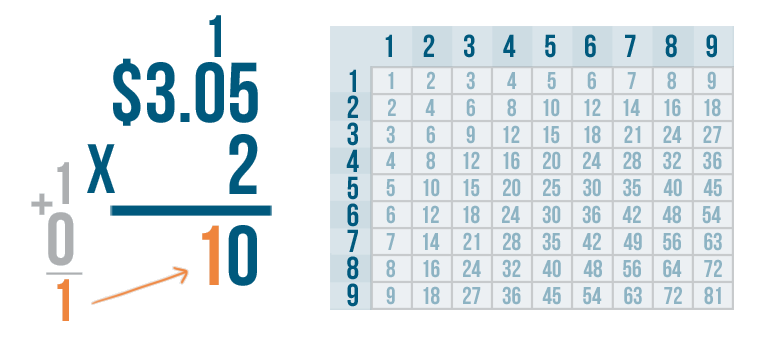
0 + 1 = 1. We'll write 1 beneath the line.

Finally, we'll multiply 2 and 3.
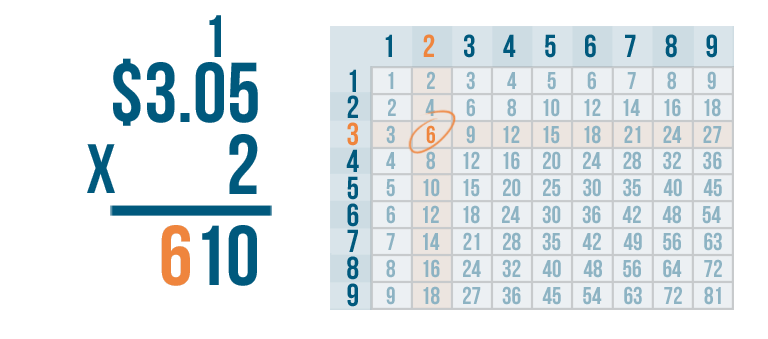
2 x 3 = 6, so we'll write 6 beneath the line.
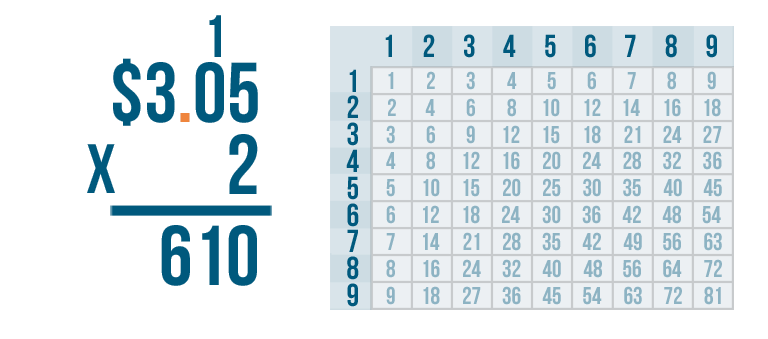
It's time to place our decimal point. We need to count the digits to the right of the decimal point in our problem.

3.05 has two digits to the right of the decimal point. They're 0 and 5.

This means our answer will need to have two digits to the right of the decimal point.
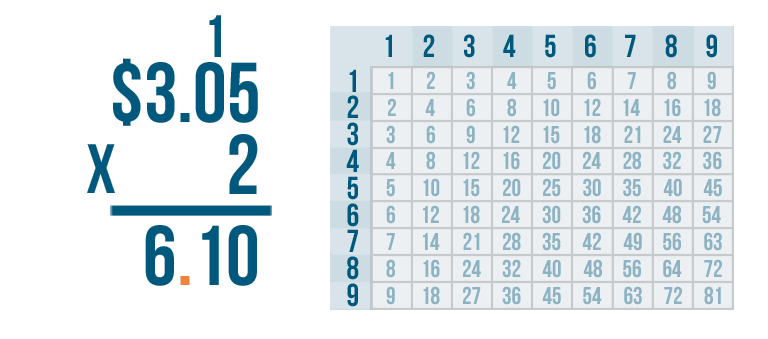
We'll place the decimal point so that two digits are to the right: the 1 and the 0.
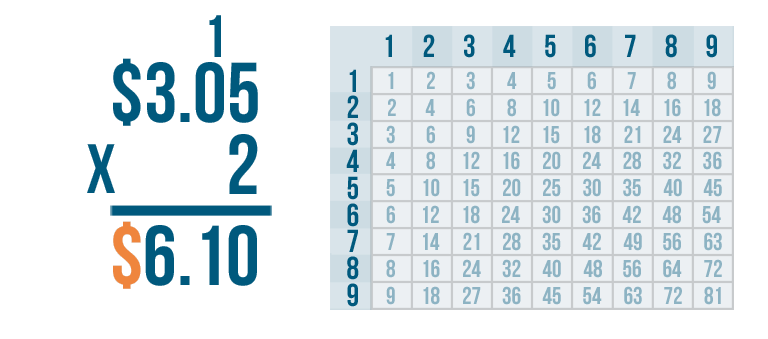
Finally, we'll write a dollar sign ($) to the left of the number.

We've solved the problem. $3.05 x 2 = $6.10. We can read this as six dollars and ten cents.








































